
Your Business SPRING 2024 Taking Tech to the Fields • Get to Know Rowan • Mind Over Mission
Mind

FREDERICK COUNTY, MD
Where Big Ideas Grow
NAMED
'Top 10 Remote-Ready Cities'
Livability
'Best Business Climate'
Metro and Global Rankings Report
'Best Places to Live'
Livability
'Healthiest Counties in MD'
County Health Rankings

www.discoverfrederickmd.com
SERVICES
Business Expansion and Location Assistance
Incentive and Funding Resources
Permitting and Zoning Assistance
Marketing and Public Relations
Diversity, Equity, Inclusion and Belonging EmPOWER Program
Business Networking and Industry Connections
Demographic and Business Data
2 Frederick Business Quarterly Spring 2024


93% startup FITCI is more than just office and lab space. We are a dynamic ecosystem passionately assembled to support entrepreneurs at every stage of their journeys, right here in Frederick. FREDERICK INNOVATIVE TECHNOLOGY CENTER, INC. | FITCI.ORG | 301-694-2999 | INFO@FITCI.ORG The journey starts here. success! Join FITCI at The EDGE at 321 to find out how Spring 2024 Frederick Business Quarterly 3
BUSINESS BRIEF
Dear Readers,
Welcome to the Tech Issue, in which we delve into the ways that the everchanging world of technology has affected how Frederick County businesses make things happen.
Our team spoke with business owners and county leaders to determine how new technology influences their decisions and how it helps their production and productivity.
This issue covers everything from how technology has successfully merged with an historically agricultural community to how a new data center will contribute to the continuing technological development of the region.
It is our sincere hope that in these pages you will find inspiration, education and the motivation to mind your business.
The staff of Frederick Business Quarterly

PUBLISHER Donna S. Elbert donna@pulsepublishing.net EDITOR/CREATIVE DIRECTOR Melissa Howes-Vitek melissa@pulsepublishing.net DIRECTOR OF OPERATIONS Gabby Mongeau gabby@pulsepublishing.net BUSINESS DEVELOPMENT Ron Cramer ronald@pulsepublishing.net MARKETING DIRECTOR Susan O’Connor susan@pulsepublishing.net COPY EDITOR Molly Fellin Spence molly@pulsepublishing.net GRAPHIC DESIGNER Ana Lazo Eastep CONTRIBUTORS Erik Anderson Shuan Butcher Dave Gorham Whitney Hahn Kelly Shultz Chris Slattery Molly Fellin Spence Ellyn Wexler Shea Winpigler DISTRIBUTION distribution@pulsepublishing.net 12 S. Market Street, Suite 101 Frederick, MD 21701 p. 301-662-6050 | f. 301-662-5102 www.FrederickBusiness.com Frederick Business is a bimonthly publication of Pulse Publishing, LLC. Customer inquiries should be directed to Pulse Publishing, LLC. Manuscripts, drawings, photography, and other submissions must be accompanied by a stamped, self-addressed envelope. The Frederick County Guide is not responsible for unsolicited material. All contents of this publication are protected by copyright and may not be reproduced in whole or in part for any reason without prior consent of the publisher. Frederick Business makes every effort to ensure accuracy of its resource listings, but does not hold responsibility for incorrect or missing information. We wish to thank our advertisers for their continued support! Many thanks to the countless Frederick County residents and employees who offered their time and insight to add to the content of this issue. SPRING 2024 On the cover: Illustration generated by AI. 4 Frederick Business Quarterly Spring 2024



Spring 2024 Frederick Business Quarterly 5





6 Frederick Business Quarterly Spring 2024 INDEX 10 LEADERS WHO LEARN Top picks in print and podcasts 12 FACE VALUE Side hustle: with Brady McCartin 16 MIND YOUR BUSINESS Faster, cheaper, better 30 IMPACT Frederick’s future in a tech-driven world Technology has revolutionized farming 42 STRATEGY & GROWTH What limiting belief are you ready to rewrite? 48 WORK/LIFE BALANCE Productive but protected 12 16 42 48 30 24 DATA CENTER BOOM FEATURE



Spring 2024 Frederick Business Quarterly 7 Agent 1090 West Patrick Street, Suite C Frederick, MD 21703 Bus: 301-695-5244 danielle@danielleleonard.com www.danielleleonard.com Danielle Leonard State Farm Fire and Casualty Company, State Farm General Insurance Company, Bloomington, IL State Farm Florida Insurance Company, Winter Haven, FL State Farm Lloyds, Richardson, TX Like a good neighbor, State Farm is there.® As a small business owner myself, I know what it takes to make things run. It’s why I’m so passionate about helping other small businesses. State Farm® small business insurance plans don’t offer a one-size-fits-all approach. Why? Well, your business needs the coverage that works best for you. Call or stop in for a custom quote today. Small business insurance that works for you








WE ALSO OFFER VANPOOL SERVICES! TRANSIT GOES BEYOND THE BUS... VISIT OUR WEBSITE FOR MORE INFORMATION: LIST OF CURRENT VANPOOL ROUTES STARTING IN FREDERICK COUNTY: ASSIST NEW AND EXISTING VANPOOLS IN FINDING RIDERS OFFER A FINANCIAL SUBSIDY TO HELP FILL VANPOOLS Frederickcountymd.gov/Transit Transit@frederickcountymd.gov More info by phone: 301-600-2065 Facebook: Transit Services of Frederick County Twitter: @TransitServices 8 Frederick Business Quarterly Spring 2024
Just off I-70, 8 miles east of Frederick, there’s New Market. A hidden gem that’s been around since George Washington was president, New Market was originally a stopover on the National Road for travelers headed west. Today, New Market is a place to visit and relax with family and friends. Stroll along historic Main Street, grab a bite to eat at one of our restaurants, visit our one-of-a-kind shops, all locally owned, check out the public art in the Community Park. Free and convenient parking; shops with a smile.
To learn more, especially about our events, such as our June Block Party and the December Christmas Parade, check our website: www.townofnewmarket.org/small-town-fun
Friendly shops, tasty food, and pretty streets— New Market




driving, you can be in
different world. www.townofnewmarket.org Spring 2024 Frederick Business Quarterly 9
Slow down. Without a lot of
a
LEADERS WHO LEARN...
Where do executives and small business owners go to tune into the latest trends and cultivate inspiration? We asked a few of our contributors for their top picks in print and podcasts.

PRO APP
Headway
“I don’t have time to read.” A typical answer from a busy person. I know I’ve said it before.

I certainly make time for cheesy romance novels and cozy, murder mysteries on occasion, and am caught binge-watching “30 Rock” and “Abbott Elementary” frequently, but “oh no, I don’t have time for books.” Not true!
So what is true?
Time is a valuable resource.
In my job, communication and negotiation are incredibly important. Pop culture is a great conversation starter, but it doesn’t typically help me close deals. Knowledge, experience, and effort, on the other hand, do.
Last year I began my search for inspiring and thought-provoking content to ease up on my habitual doom scrolling and YouTube rabbit holes. I wanted content that could help me excel in my career and relationships, and provide me with a daily dose of motivation. Watching hour-long blooper reels of The Office doesn’t make me better at thinking more effectively or managing my time.
So, I took a chance and downloaded the Headway App, a bitesized audio and ebook app. This app takes famous nonfiction titles and makes them digestible. You can listen to James Clear’s “Atomic Habits” in 15 minutes to kickstart your behavior change or “Pitch Anything,” by Oren Klaff, so you can master the art of pitching and persuasion.
Whether you’re trying to get better at negotiating, communicating, investing, or leading or want to hear from successful authors and entrepreneurs about innovation, emotional intelligence, courage, career pivots, etc, there’s a little piece of something to appeal to any member of any crowd.
The platform is easy to use, the subscription fee is roughly $20 to $50 annually depending on whatever special they’re running, and for me, it’s worth the two to four dollars that I spend on it monthly.
Instead of heading to YouTube to pick a video solely on its thumbnail, I can simply open up the app and see a handful of quick-read/listening options, monetize my time, regain control, stop doom scrolling, and start microlearning.
I’m currently listening to “UnF*ck Yourself: Get out of Your Head and into Your Life,” by Gary John Bishop. I have a 5-day morning routine challenge and a 28-day success challenge currently running, which feels like a purposeful way to use my time.
When you begin your journey with Headway, you choose specific goals that are important to you. You can choose from winning at work, having more money, being productive, improving your social life, building a strong family, etc. Your homepage is tailored to your goals, and you are recommended collections and personalized challenges in addition to the books you choose to read/listen to.
So make Headway and get the app.
– by Shea Winpigler
10 Frederick Business Quarterly Spring 2024
istockphoto.com
/ Jacob Wackerhausen
PRO READS
Fix This Next
by Mike Michalowicz
Small business owners have so many demands that it can be difficult to prioritize what to do next. Everything seems like an important thing, but the fact is, that all of our tasks do not have the same value.
This is why I love (and frequently recommend) the book “Fix This Next,” by Mike Michalowicz. It helps you identify the critical activity your business needs you to focus on right now.
Instead of getting caught in a distracting vortex of pings, notifications, and ringing phones, it gives you a clear hierarchy of business needs and the foundational vital needs within each level (i.e. sales, profit, order, impact, and legacy).
There’s even a quick, free online quiz you can take to help pinpoint what the next unresolved coordinate is. The book helps you find it, fix it, test again, and then know what to do next. It’s a wonderful diagnostic tool for entrepreneurs and business owners.
– by Whitney Hahn



Spring 2024 11 LEADERS WHO LEARN...
Want to star t or grow a B usiness in Frederick? Contact The City of Frederick’s Department of Economic Development FOR FREE ASSISTANCE AND INFORMATION REGARDING: 101 North Court Street 301-600-6360 | businessinfrederick.com FOLLOW BusinessinFrederick • Business Start Up Guidance • Site Selection Assistance • Grants & Incentives • Licensing & Permitting • Community Connections • Promotional Support • Local Data • And More!
FACE VALUE

SIDE HUSTLE: With Brady McCartin
by Ellyn Wexler
12 Frederick Business Quarterly Spring 2024
Photo by Susan O’Connor

Frederick County firefighter Brady McCartin knows that collecting patches is a popular hobby among his peers. And that was the inspiration for his side hustle, Back Step Graphics
Growing up, McCartin and his brother, Jimmy, enjoyed using MS Paint and Adobe Photoshop to create logos and images. When both McCartins became career firefighters, they began designing patches and morale stickers for fire stations. “Jimmy has been right there with me, helping me draw designs and hearing my crazy ideas on how to grow this business.”
When McCartin realized “many firehouses wanted modernized, high-quality patch designs,” he decided to move beyond the free apps available on his cellphone and took online Adobe program classes to become more proficient.
Firefighters display the designs on shirts, stickers, bags, and flags,” McCartin said. “Some stations want a design made for stickers they can put on water bottles, helmets, or other equipment to show station pride.” Since many bags and backpacks have Velcro, he adds Velcro to his patches “so you can simply slap them on and switch them out,” he said. “No more sewing them on!”

To boost business, McCartin passes out stickers with his logo. “I really enjoy seeing someone walk into a firehouse with one of my stickers on their tumbler,” he said.
“A lot of guys take their station patches along on vacations and give them to other fire departments across the country and world. And some bars and restaurants — like Mission BBQ — display patches; getting your station patch on the walls of a bar in a different state is cool.”
The McCartins’ father influenced the choice of the business’s name. “My dad — who has been a firefighter for over 40 years — used to tell me about how they would ride on the tailboard of the
Spring 2024 Frederick Business Quarterly 13
Inset photo by Gabby Mongeau

14 Frederick Business Quarterly Spring 2024 Face Value
Photo by Susan O’Connor

fire engine when he was younger, and they called it riding the back step. Even as a kid, I always thought that was the coolest thing,” McCartin said.
McCartin considers his biggest achievement so far was designing the logo and apparel for the Key City Fire Conference in March. The conference itself enabled him to introduce his company to firefighters from around the country.
The connections McCartin has made with other firefighters are an unexpected benefit of his business. In the beginning, “seeing so many firefighters that have side businesses outside of work was really inspiring,” he said. And when he talks about his side hustle at work, his coworkers offer feedback and are always willing to answer his questions. “They can be my biggest supporters. It really shows how the fire service is one big family.”
Navigating the worlds of digital marketing and finances has been challenging. “It takes a lot to learn how to gain followers and clients … and a lot of time and dedication to grow your digital presence,” Brady said. Having learned that “when it comes to finances and taxes, there is a lot to work through,” he advises having “someone you can lean on when it comes to learning how to organize your books.”
Access to technology has proven invaluable. “Without researching on the internet, I would have never even known where to start,” McCartin said. He promotes Back Step on Instagram,
where he has connected with people who have provided him with “countless amounts of useful information.”
Juggling two jobs can be tough, McCartin acknowledged. “I mainly try to schedule my graphic work while my wife is at work, so we can have our time together when she gets home. Not letting work interfere with my home life is key.
To reach Back Step:
d Back_Step_Graphics
F Back Step Graphics
Email: backstepgraphics@gmail.com

Freelance writer Ellyn Wexler previously served as executive editor of the Arts & Humanities Council of Montgomery County’s CultureSpot online magazine and features editor for the Gazette newspapers. She currently spends her time exercising, reading novels and teaching drawing to elementary schoolchildren.
Spring 2024 Frederick Business Quarterly 15 Face Value
Photo by Gabby Mongeau
 by Whitney Hahn
by Whitney Hahn
16 Frederick Business Quarterly Spring 2024
MIND YOUR BUSINESS Faster, Cheaper, and Better: How AI-Enabled Businesses Can Personalize ChatGPT
istockphoto.com/ Supatman

OpenAI introduced the first consumer-facing “generative pretrained transformer,” also known as ChatGPT 3.5, in late 2022, thousands of articles, podcasts and posts have been published about the paradigm-shifting possibilities it offers.
But many small business owners may feel frustrated about how to use the tool to their advantage.
Many new users never truly realize the potential of GenAI technology such as ChatGPT, for two main reasons:
1. Lack of iteration: Many users encounter disappointing initial responses from ChatGPT and hastily conclude it’s inadequate for their needs, without attempting to refine or guide the AI through further interaction. This premature judgment misses the potential for improvement and customization.
2. Failure to customize: Users often receive generic responses that don’t reflect their unique voice or brand identity. This occurs because they haven’t invested time in training ChatGPT with specific instructions tailored to their audience, use case, or desired content length and style.
By personalizing and shaping ChatGPT with custom instructions, you can turn generic responses into tailored, on-brand responses. With a little patience, subject matter experts can train and shape the bot to produce impressive results faster, cheaper and better.
Why ChatGPT’s Ideas Need Shaping
Generative AI platforms such as ChatGPT draw from vast amounts of information to prepare responses. While it’s easy for the bot to complete research and provide lots of suggestions, that doesn’t necessarily mean the responses are any good.
A recent study conducted by Jeremy Utley of Stanford University and Kian Gohar, CEO of Geolab, proves this. The researchers partnered with two U.S. companies and two European companies for the study. Employees in each firm worked in small teams to approach a company problem. Some of the teams used GenAI while others did not.
The teams had a limited amount of time to think about and outline potential solutions, which were then evaluated by members of the organization.
The researchers were surprised by the results. They had hypothesized that teams using GenAI would come up with more and better ideas than the others. But the research showed that while the teams leveraging ChatGPT did generate more ideas, they also generated fewer outstanding ideas.
“Generative AI helped workers avoid awful ideas, but it also led to more average ideas,” Gohar said.
It’s true that the potential for problem solving with GenAI is real. It’s also true that iteration is key. Initially, ChatGPT’s responses may not hit the mark, but through a process of refinement — much like mentoring a new employee— you can mold its outputs to your exacting standards.
Spring 2024 Frederick Business 17

The symbiosis between AI capabilities and human expertise is what transforms good responses into great ones. Ensure that responses from ChatGPT are reviewed by subject matter experts to guarantee accuracy and relevance, especially in specialized domains.
18 Frederick Business Quarterly Spring 2024 Mind Your Business istockphoto.com/ dem10
Mind Your Business
Using the strategies and techniques described in this article, we’ve been able to help our clients outline materials of average complexity in minutes instead of hours. Even complex materials can be outlined in hours instead of weeks, making the iterative process worthwhile.
Here’s how to refine ChatGPT’s outputs to be accurate, on-brand, and genuinely useful to your business:
Customize ChatGPT with your “global settings”
In your profile, you have an option called “Customize ChatGPT.” This is where you can add preferences that will be applied on a global level to all responses generated.
It’s a great place to add instructions about the brand voice you wish ChatGPT to emulate, including preferences for tone (e.g., direct, poetic, technical), language complexity, and writing style.
Ensure that the instructions you give to ChatGPT include elements of your brand’s identity, such as key messaging, terminology, and any unique stylistic preferences that differentiate your brand.

Compartmentalize Complex Tasks
Break down complex tasks into smaller, manageable parts when instructing ChatGPT. This not only makes it easier for ChatGPT to generate accurate responses but also allows you to pinpoint where adjustments are needed.
For example, developing a 90-day onboarding plan for a new employee could start with you defining six major objectives for the individual. One by one, you can then ask ChatGPT to suggest activities and comprehension tests that the individual could complete while tackling each objective. You could then ask it to write a description, time limit, and standard operating procedure for each activity.
By taking this in small pieces, the bot is more effectively able to draw from its available information, combine it with your instructions and shaping, and produce material that is more appropriate for your needs.
Use ChatGPT to Begin Idea Generation
Using GenAI is a wonderful way to get unstuck. Few people enjoy staring at a blank page, but subject matter experts are often able to quickly improve on the first draft created by a bot.
Specify the content type, your goal, the desired content length and clarity (avoiding jargon, using layman’s terms) according to the target audience’s preferences and the content’s purpose.
You can leverage ChatGPT for generating a wide variety of ideas, such as product expansions for selected audiences, marketing content and social media strategies, outlining job descriptions and SOPs, or solving operational challenges.
While it is unlikely that you will get the perfect answer the first time, it is very likely that you will crack the seal and start to make progress quickly.
Have Responses Reviewed by a Subject Matter Expert
You probably wouldn’t accept the first response from an intern with confidence. In the same way, the first response from GenAI should not be blindly accepted and used. This is a recipe for embarrassing mistakes and damage to your brand reputation.
The symbiosis between AI capabilities and human expertise is what transforms good responses into great ones. Ensure that responses from ChatGPT are reviewed by subject matter experts to guarantee accuracy and relevance, especially in specialized domains. Their insights can help ensure that the content is not only on brand but also accurate and relevant to your audience.
Over time and with proper training, you may be able to relax the amount of high-level expertise that is required for review; however, make it a habit to have an educated human review all material before publishing or sharing it.
Use Chat History as a Learning Tool
Unless you change the setting or manually delete a conversation, ChatGPT holds a record of all past chats in its history. This allows you to go back days, weeks or months to pick up on a previous conversation and build on it.
In our example of developing a 90-day onboarding plan for a new employee, let’s say they complete that period successfully. You can go back to the same conversation in history and work with the bot to build a similar success plan for the next quarter, six months, year and so forth. It will retain the same information about the job description, success metrics, and anything else you provided to it, making the outputs relevant to the situation.
Get to Similar Results Faster in the Future
You can also use the history feature in ChatGPT to review past interactions, learn from them, and refine future prompts. That said, there’s a mind-blowing hack that I love to use.
Spring 2024 Frederick Business Quarterly 19

Use common sense when adding detailed context or specific data, especially in fields where HIPAA compliance and privacy issues are a concern.
20 Frederick Business Quarterly Spring 2024 Mind your Business
istockphoto.com/BlackJack3D
Ask ChatGPT to review and analyze your instructions and suggest ways to streamline and improve efficiency for future interactions. This allows the technology to show you how to construct prompts and more complicated prompt protocols so it can do its best work.
If you study the revised, streamlined versions that it suggests you use in the future, you will start to notice how phrasing, specificity of instructions and context become critical to generating valuable responses.
Best Practices and Cautions
Keep a Copy of Prompt Protocol Outside of ChatGPT
Keep a copy of your detailed instructions in document format. This backup helps guard against an accidental deletion of customized instructions. It also facilitates the easy repetition or refinement of future tasks, and makes it safe to share with others in your organization who use similar instructions in their work.
Check Facts and Citations
Verify the facts and citations provided by ChatGPT to avoid the spread of misinformation or reliance on “hallucinated” data. In my custom instructions, I give the bot explicit directions to take time required to do the research, give citations, and provide direct links to the source material whenever possible. ChatGPT 3.5 can’t do this, since it isn’t connected to the internet. However, ChatGPT 4.0 can and will do it, if you insist.
Be mindful of Privacy and Data Sensitivity
Use common sense when adding detailed context or specific data, especially in fields where HIPAA compliance and privacy issues are a concern. Do not upload private, proprietary, or sensitive information into ChatGPT, even with the paid Plus, Team, and Enterprise models, unless you’re certain of the privacy measures in place.
A Valuable Investment for Business Optimization
I highly recommend upgrading to the paid “Plus” version of ChatGPT. This currently costs $20 per month and gives you:
• Access to the more advanced GPT-4, which is better at analysis than version 3.5
• The AI imaging power of DALL-E
• Real-time web browsing capabilities
• The ability to create custom GPTs without needing to input new instructions every time.
This option to build a library of “My GPTs” is underused by many small business owners. In my opinion, this is where the tool really starts to expand into better territory, not just faster and cheaper.
We’ve started to build and train our own versions of tools for workforce enablement, sales and marketing.
Over time, we’ll refine and expand this library for use by our organization and those of our clients, leveraging it to solve real business problems quickly and effectively.
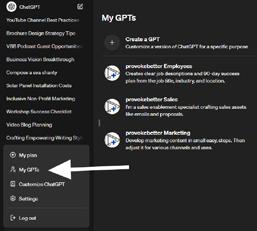
A “Team” version is now also available ($25 per person, per month) and has two big differences over Plus:
• You can create and share custom GPTs with your workspace, ensuring that everyone in your organization is using the same shaped and tested prompt protocols.
• Team data is excluded from training by default. This means OpenAi does not train on your business data, and you own your inputs and outputs (where allowed by law).
Embracing ChatGPT in your business is not just about leveraging AI; it’s about crafting a digital apprentice that grows with you, understanding your needs and nuances. As you venture into this exciting terrain, remember that the journey is as rewarding as the destination. Happy customizing!

Whitney Hahn, an entrepreneur with 20 years of experience, helps people grow their business while OUTgrowing their busyness. Her journey with ChatGPT has unlocked new potentials in AI application for business processes, marketing, and HR, proving the power of customization in achieving remarkable results. Contact Whitney for bespoke ChatGPT configurations and to explore other business optimization strategies at provokebetter.com.
Spring 2024 Frederick Business Quarterly 21
Business
Mind your
MARYLAND GOLF

With a county population of 300,000 and 13 golf courses, Clustered Spires has earned “Best of Frederick Golf Course”!
Golf Digest awards
Clustered Spires a HHHH rating.
Clustered Spires reputation is a great conditioned golf course with wonderful greens and considered the best value golf course in central Maryland.
ClusteredSpiresGolf.com
22 Frederick Business Quarterly Spring 2024



at its finest 8415 Gas House Pike | Frederick, MD 21701 | 301-600-1295 CLUSTERED SPIRES GOLF CLUB NON-SENIORS RATE Monday–Thursday $54 Friday $59 Saturday & Sunday ........ $74 SENIORS/60+ RATE Monday–Friday .............. $42 TWILIGHT RATE 5 pm–Dusk ..................... $45 Spring 2024 Frederick Business Quarterly 23

Frederick proceeds with caution while jumping into the DATA CENTER BOOM
24 Frederick Business Quarterly Spring 2024
Photo courtesy of Rowan Digital Infrastructure
by Molly Fellin Spence
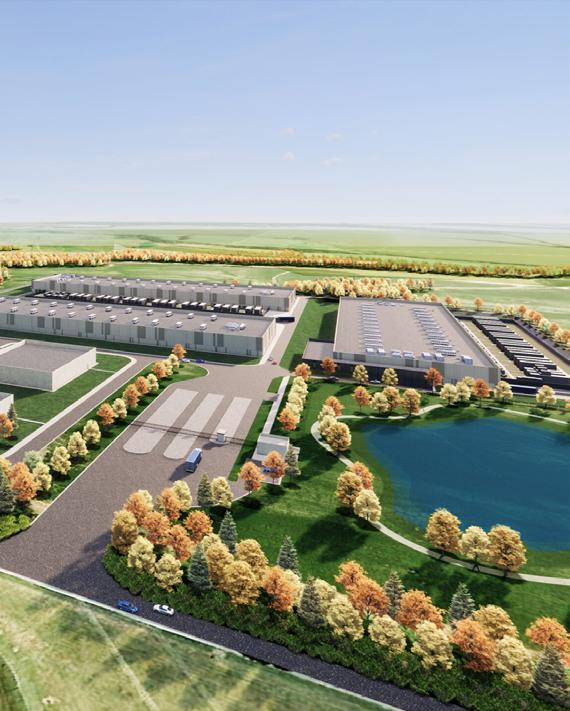
Spring 2024 Frederick Business Quarterly 25


Since basically the beginning of the internet, Northern Virginia has been the top site for data centers in the world, cashing in on tax revenue and job growth as a result. But growing environmental concerns and power limitations are starting to slow growth there, even as the need for more data centers increases.
And that leaves open an opportunity.
Maryland Gov. Wes Moore has been hoping to seize that opportunity, proposing legislation that would make it even more attractive for data center companies to set up shop in his state, just over the border from Virginia.
Frederick County leaders are also looking to get in on the action, working to study and get ahead of potential pitfalls before the lucrative centers are built here.
“Residents of Frederick County expect us to get this right,” said Renee Knapp, a member of the Frederick County Council and the county’s Data Centers Workgroup. “Together, we will propose a fair regulatory structure that preserves our environment, protects our quality of life, and provides stability and predictability for those who want to invest in the data center industry.”
What are data centers, anyway?
A data center is a highly specialized building that serves as the physical location to house computer servers and routers, data storage devices and networking equipment that make digital interconnectivity possible.
Two data centers are already located in Frederick County – both in Urbana and both supporting federal government operations. In 2005, a 250,000 square-foot data center opened to support the operations of Fannie Mae, the federal agency that works with the mortgage industry in lending funds to homebuyers. And in 2014, a 300,000 square-foot data center opened to help process more than 75 million transactions a day for the Social Security Administration, maintaining data on earnings and benefits for workers nationwide.
Data centers are necessary for our modern way of life, allowing us to quickly access information for business and personal use. Recent rapid growth of technologies such as artificial intelligence, or AI, have contributed to a spike in industry demand for data centers.
But these centers also demand a lot of energy from local power grids. The consulting firm McKinsey projected in a January 2023 report that U.S. data center power demand will more than double between 2022 and 2030.
26 Frederick Business Quarterly Spring 2024
Data Center Boom
Photo courtesy of
Fannnie Mae Data Center, Urbana, MD. Photo courtesy of gensler.com
Bottom left: istockphotocom/Wirestock
Data Center Boom

Martin Romo (left), senior director, economic development & policy, and Charley Daitch, chief commercial officer, Rowan Digital Infrastructure.
by Susan O’Conner
“We have been blown away by the partnerships that we have been able to establish (in Frederick County). Everyone has been an incredible partner to us. It’s such a community in growth, it’s a very collaborative place to do business. There are so many proud business owners here.”
- Charley Daitch, chief commercial officer, Rowan Digital Infrastructure
“In the U.S. market alone, demand — measured by power consumption to reflect the number of servers a data center can house — is expected to reach 35 gigawatts by 2030, up from 17 GW in 2022,” the report states.
Quantum Loophole & Rowan Digital Infrastructure
In June 2021, Quantum Loophole, Inc., acquired 2,100 acres in Buckeystown, on the former Alcoa Eastalco Works smelting plant site, where it intends to create a first-of-its-kind master-planned data center campus. By planning ahead, the company hopes to build responsibly and avoid the issues that Northern Virginia is now facing.
Quantum Loophole has designed and constructed a large capacity fiber ring, QLoop, to directly connect the Frederick data center community to the Ashburn ecosystem in NoVa: “When completed in mid-2024, QLoop, a 40-mile fiber network ring, will be able to offer more than 235,000 strands of fiber to network operators, carriers and data center providers across its nearly 3.5 square mile development site in Maryland.”
An October 2023 Maryland Tech Council study says that the proposed data center campus in Frederick County would provide $41 million in local tax revenue annually and estimates the creation of 48,000 temporary jobs during 15 years of construction and almost 2,000 permanent jobs once the campus is up and running.
Rowan Digital Infrastructure last fall announced plans for the construction of an 800,000 square foot green data center built on 151 acres of the Quantum Loophole campus, creating the Frederick Clean Cloud Community. In January, the county’s Planning Commission unanimously approved Rowan’s site application, and construction is expected to begin this spring.
“This is really what is driving our modern economy. The industry continues to grow,” Rowan’s Chief Commercial Officer Charley Daitch told Frederick Business Quarterly during a recent interview. “We are trying to find responsible ways to grow the industry here.”
Rowan estimates that the development, expected to span over two years, will create 800 temporary construction jobs and 100 permanent positions once the data center is fully operational.
According to a January 2024 study by Sage Policy Group, an economic and policy consulting firm headquartered in Baltimore, Rowan’s facility will generate an estimated $2.6 million in Frederick County during construction and more than $20 million in state level tax revenues, mostly through augmented sales tax receipts.
Spring 2024 Frederick Business Quarterly 27
Photo

The report, published by the Maryland Tech Council, also points to the data center’s secondary impacts, including economic activity that could generate nearly $7 million in annual tax revenues for Frederick County and $14 million for the state.
Rowan’s Senior Director of Economic Development & Policy Martin Romo told Frederick Business Quarterly in an interview that the company’s plans are sure to attract additional business to the region.
“Once you have a data center hub in one place, it’s attractive to build additional centers nearby. It also becomes easier to permit future ones,” Romo said. “Trades get specialized, and it becomes a good ecosystem, each building on one another.
“It’s an honor to be at the tip of the spear,” he said. “We feel honored to be getting started, and there’s good pressure to get things right here.”
Romo and Daitch said as Rowan went through the site selection process, figuring out where it wanted to build next, it focused on finding a region where it could build partnerships with the local community and elected officials. And they found it in Frederick County.
“We have been blown away by the partnerships that we have been able to establish here,” Daitch said. “Everyone has been an incredible partner to us. It’s such a community in growth, it’s a very collaborative place to do business. There are so many proud business owners here.”
Lessons from Northern Virginia
The collection of nearly 300 data centers scattered across Loudoun, Fairfax and Prince William counties in Northern Virginia, known as Data Center Alley, handle more than one-third of the world’s online traffic.
A report by the Northern Virginia Technology Council estimates that the area’s data centers were responsible for nearly $174 million in state revenue and $1 billion in local tax revenue in 2021.
Frederick County Executive Jessica Fitzwater has said that she recognizes the opportunity that data centers present for Frederick, but wants to proceed with caution.
She created the Data Centers Workgroup in June 2023 to “to convene stakeholders to develop a model for critical data infrastructure that leverages the benefits data centers can provide while protecting the environment and Frederick County’s quality of life.”
At the same time an executive order paused individual zoning map amendments that could allow for new data center construction in Frederick County so that growth and expansion “would not take place in a piecemeal fashion.”
Frederick County’s Data Centers Work Group issued its final report on March 1, stating that “ongoing attention will be needed to ensure that the residents and businesses of Frederick County
28 Frederick Business Quarterly Spring 2024 Data Center Boom
Vantage Data Center, Northern Virgina campus. Photo courtesy of datacenterdynamics.com

are neither overly burdened by digital infrastructure growth, nor that we heedlessly restrict a modern industry.”
Fitzwater pointed out during remarks in December at the Maryland Association of Counties Conference that “the data center industry brought economic and tax benefits to Northern Virginia, and it also brought concerns about environmental sustainability, energy and water usage, noise, vibration, and impacts on the quality of life.”
Frederick officials are determined to learn lessons from their neighbors.
Fitzwater said she and other officials are trying to be mindful about preserving the rural farmland area where Quantum Loophole is building.
“We’re trying to leverage the benefits of the data center industry while preserving Frederick County’s environment and quality of living,” she said.
Frederick’s Data Center Workgroup recommended in its March 1 report that the Frederick County Council should consider establishing an overall upper limit for the square footage, land acreage or energy usage that data centers can consume. It also recommended requiring periodic monitoring of noise, air quality, water usage and stormwater management that data centers could impact in the county, enlisting an independent third party to monitor and enforce limits.
For its part, Rowan says it has been working closely with power utility operators to “set aside any fear that we are going to compete for power with homes or businesses,” Romo said, adding that the Alcoa site was particularly attractive for a data center due to its existing power infrastructure.
Rowan only works with tech companies that have similar sustainability goals.
“Our intent is to be good neighbors here and be good economic contributors and show it’s worth it for the community,” Romo said. “We are contributing a lot of capital that the community can leverage and we want to keep investing in Frederick.”

Molly
an accomplished writer and editor with
than two decades of experience in the world of journalism. She’s worked with a variety of print and digital publications in the Mid-Atlantic region creating and honing compelling content to engage readers. A native Pennsylvanian, she has called Frederick, Maryland, home since 2002.
Spring 2024 Frederick Business Quarterly 29
Center Boom
Data
Fellin Spence is
more
Proposed site of the Frederick Data Center. Photo courtesy of Rowan Digital Infrastructure
IMPACT
Frederick’s Future in a Tech-Driven World
by Kelly Schulz
It is rare to read the news these days without learning of a new technological breakthrough that could change our businesses, our economy, or our lives. Artificial intelligence, cell-based cancer treatments, and drones monitoring crop health are just a few examples taking root here in Maryland.
As CEO of the Frederick-based Maryland Tech Council, I am often asked: Can Frederick County compete in an economy changing so fast?
The answer is a resounding yes. In fact, we already are. Some of the most innovative and high-paying industries in the world are planting roots and creating jobs in Frederick County.
Here are some examples of how Frederick County is adapting its economy to compete and win in the 21st century.
30 Frederick Business Quarterly Spring 2024
Spring 2024 Frederick Business Quarterly 31 istockphotocom/hatchakorn Srisook
IMPACT: Frederick’s Future in a Tech-Driven World
Making Frederick a Data Economy Leader
Quantum Loophole, a digital economy pioneer, is developing a state-of-the-art, environmentally friendly data center campus at the old Eastalco smelting plant site in Buckeystown.
Data centers are the backbone of our digital economy. Every email we send, every mobile app we click, and every movie we stream depends on a data center. If Quantum Loophole secures the necessary permits, it would put Frederick County on the map of America’s digital economy.
The Maryland Tech Council commissioned a third-party study of the campus’s economic impact and found that construction would support approximately 3,000 direct and secondary jobs per year, $3.1 billion in local labor income, and $25.8 million in county tax revenues.
Once fully operational, the campus will support 6,300 jobs in the county annually, including 1,700 on the campus and $65,000 in average annual per-worker wages. The U.S. Census Bureau lists Frederick County’s per-capita income as $46,615, meaning Quantum Loophole’s jobs will pay 39% more than average. The county would also receive an estimated $41 million in tax revenues annually. Our report is available at www.mdtechcouncil.com.
Quantum Frederick is a once-in-a-generation chance to revitalize an abandoned industrial site into a digital campus that powers the paychecks of our local workforce. It will also help fund local schools and public safety.
I am optimistic that state and county leaders can work with Quantum Loophole to find solutions that get this project permitted and shovels in the ground soon.
Building Frederick’s Biotech Ecosystem
Frederick County is rapidly becoming a destination of choice for the world’s top life sciences companies, including AstraZeneca and Kite, a Gilead company. New therapies for cancer, autoimmune diseases, and respiratory problems are produced here in Frederick. It’s no exaggeration to say that patients worldwide depend on Frederick County workers for their treatment. Emerging biotech companies are making their mark, too. Frederick-based Theradaptive recently earned FDA approval for a highly innovative spinal fusion clinical trial.
Frederick County leaders deserve credit for prioritizing the life sciences industry. The key to expanding our leadership in this industry will be developing a strong pipeline of workers with relevant skills.
Fixing our Labor Shortage
Not all economic indicators in Maryland are strong. A report from Maryland Comptroller Brooke Lierman found that our economic growth and wage growth lag the national average, and we’re experiencing a population outflow to Pennsylvania, Virginia and North Carolina — the same states we compete with for technology and life sciences jobs. Further, declining labor



force participation has made it harder for Maryland firms to grow. Frederick County is not immune to these challenges.
That’s why the Maryland Tech Council launched BioHub Maryland, a skills training initiative to equip military Veterans and Marylanders in Frederick County and beyond with the skills they need to compete for life sciences careers.
Recent studies show that one out of every three life sciences job openings in Maryland does not require a bachelor’s degree,
32 Frederick Business Quarterly Spring 2024
Top left: istockphoto.com/akinbostanci Bottom left courtesy of AstraZeneca.com
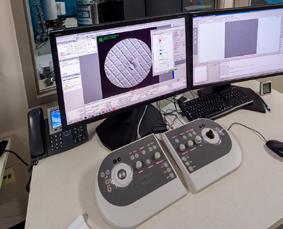
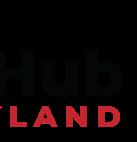

making it an ideal industry for residents who do not go to college but seek to add value to the workplace and the world. Additionally, life sciences incomes average $128,800 in Maryland, almost nearly double the statewide average for all industries ($68,900).
We have partnered with Frederick-based Platoon 22 to introduce military veterans to BioHub Maryland’s skills training program, and we are proud to have graduated our first cohort of veterans in the Fall of 2023. BioHub Maryland aims to be operating
a state-of-the-art bioprocessing skills training facility to train new workers by the end of 2024. Learn more at biohubmaryland.com.
Getting Economic Policy Right
If we don’t get economic policy right, we won’t get our economy right. That’s why the Maryland Tech Council serves as the voice of innovation in Annapolis and Washington. In the recently concluded legislative session, we advocated for or against or monitored nearly 70 pieces of legislation and are working to protect drug innovation as Maryland’s Prescription Drug Affordability Board considers drug price controls. We made tangible progress on data privacy legislation, sensible regulation of artificial intelligence, support for strategic industries like data centers, expanding workforce development solutions, and enhancing the state’s economic competitiveness.
As a former state legislator, I know how critical the business community’s voice can be in the halls of power. My message to the Frederick County business community is this: never underestimate your ability to improve economic development policy. But, we can only do it if we are engaged with policymakers in Frederick, Annapolis, and Washington.
The Future is Bright for Frederick County
I am amazed at the economic transformation in Frederick County since I moved here 20 years ago. We are preserving and enhancing our proud agricultural heritage while adapting to the future by encouraging biotechnology, advanced manufacturing, and data center development. Organizations like the Frederick Innovation Technology Center (FITCI) and the Frederick National Laboratory for Cancer Research are enabling innovations that will have lasting impacts in the 21st century. But above all, our individual businesses make our economy grow. Frederick’s business community is a driving force toward a brighter future, and I encourage our business leaders to stay engaged - with your community and your elected representatives.

Kelly Shulz is CEO of the Maryland Tech Council, the state’s largest trade association for the technology and life sciences communities. She previously served as Maryland Secretary of Labor and Secretary of Commerce in the Hogan Administration and represented District 4A (Frederick County) in the Maryland House of Delegates from 2011 to 2015. A mother of two grown boys, she and her husband live in Frederick County.
Spring 2024 Frederick Business Quarterly 33
Frederick’s Future in a Tech-Driven World
IMPACT:
Top right courtesy of frederick.cancer.gov Bottom right courtesy of fitci.org
IMPACT:

Technology has Revolutionized Farming
by Shuan Butcher
34 Frederick Business Quarterly Spring 2024

When it comes to farming, you name it and technology has likely revolutionized how it is being done today. Gone are the days when farmers do everything by hand.
“Technology and innovation are driving agriculture forward,” said Katie Stevens, director of Frederick County’s Office of Agriculture.
That is one reason why Frederick County created the Agriculture Innovation grants program in 2020. This program, which awards about $250,000 each year, has helped farmers diversify operations, has supported new technology for processing, and funded major expansions.
Two grant cycles take place annually with deadlines in March and October. During the last six cycles, more than $1.3 million in funding has been awarded, creating 280 full- and part-time jobs.
“Every dollar in government investment equals $5.64 in farmer investment,” Stevens said.
At Distillery Lane Ciderworks in Jefferson, projects have included creating a malt house, adding geothermal heating, and constructing a testing facility for wine and other libations. Technology can also provide farmers with a lot of helpful data and assist with ensuring a safer food supply.
“Innovation is key to driving agriculture,” Stevens said. And it has implications on the entire food system.
Below are examples of how three Frederick County farms are using technology to support their businesses.
Spring 2024 Frederick Business Quarterly 35
Photo by Shuan Butcher
IMPACT: Technology Has Revolutionized Farming
Through greenhouse technology, co-founder Ali Scharifzadeh said the operation has been able to perfect the way they grow lettuce.


36 Frederick Business Quarterly Spring 2024
Background photo courtesy of District Farm
IMPACT: Technology Has Revolutionized Farming

DISTRICT FARMS
District Farms, founded in 2017, is a greenhouse located 6 miles south of Downtown Frederick, which produces leafy greens year-round, and is a recipient an Agriculture Innovation Grant from Frederick County.
Starting out with just 1 acre, the farm now has a little over 5 acres under glass and is looking to grow that to 10 acres in the near future. Through greenhouse technology, co-founder Ali Scharifzadeh said the operation has been able to perfect the way they grow lettuce.
District Farms focuses on growing butterhead lettuce, romaine, and trio at the most efficient climate and temperature possible. A lot of automation goes into making the best product. For example, shades are automated to maximize and minimize lighting and heat from the sun, when necessary. Computers with sensors detect everything from light levels and temperature to humidity.
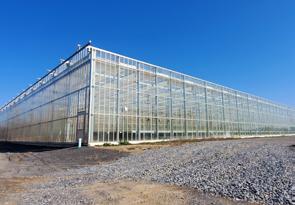
In addition, District Farms recycles 97% of its unused water.
“Our irrigation system captures and returns the excess water through the drains and pipes underneath the flooring,” Sharifzadeh said. “It is filtered, treated, and mixed with our own blend of nutrients that we have developed through trial and error.”
The conservation of water and nutrients is one of the benefits of the Controlled Environment Agriculture method. This process also uses fewer pesticides and helps reach the highest level of food safety certification.
Everything at the farm, from seeding to a conveyor system used to move plants through the growing stages, uses some form of technology.
Already the largest greenhouse in Maryland, District Farms strives to produce 16 million heads of lettuce per year, which is then provided to grocers and distributors along the East Coast.
Sharifzadeh though it is more capital-intensive than traditional agriculture, it is an improvement over traditional agriculture.
“We are working to become fully automated. This means we are able to grow on a smaller footprint near large metropolitan areas and produce a high-quality product,” Sharifzadeh said.
SOUTH MOUNTAIN CREAMERY
Last summer, South Mountain Creamery installed robotic milkers at its Middletown farms.
Ben Sowers, one of the farm’s owners, said the system has numerous benefits not only for the farmers, but also for the livestock.
“The first reason we did this was for the comfort of the cow, the second was for the comfort of us,” Sowers said. “It puts the
Spring 2024 Frederick Business Quarterly 37
Inset photo by Shuan Butcher

cow first. It lets the cow do what she wants when she wants to. We don’t have to get the cow up at 3 a.m. to milk it.”
This cow-centric technology also provides a lot of data on the cow and helps to manage the cow’s health. The system also does everything from weighing the cow to prepping and aligning the cow for milking.
South Mountain Creamery, which started milking cows in 1981, currently milks more than 500 cows on two different farms. “We currently own 2,400 acres and farm 3,300 acres in the Middletown Valley, running from Brunswick to Myersville,” Sowers said.
In 2001, the creamery started producing ice cream as part of the value-added agriculture philosophy to bring additional product directly to the consumer.
“Technology is everywhere. We use a lot of technology when it comes to processing milk, to monitoring yields.”
LINGANORE WINES
The Aellen family farm has come a long way from making wine in the basement to a 230-acre vineyard and winery now known as Linganore Wines.

John and Lucille Aellen bought the Mount Airy farm in 1971. A year later, they planted 6 acres of grapes.
“Nobody around here was growing grapes,” said their son, Eric Aellen, a second-generation owner of the business with his brother, Anthony, and third-generation family members Melissa and Parker. “There were very few vineyards in Maryland. We were the fourth winery in the state.”
Now the oldest single-family owned winery in Maryland, Linganore Wines is focused on 100% green energy. They have upgraded diesel utility vehicles to all electric to reduce the use of fossil fuels and have had autonomous electric tractors for the past two years. They also use solar and wind power throughout their operations.
New grape varieties are also being developed.
“Plant breeders are seeing the impact that climate change is having,” Eric Aellen said. These new varieties allow for minimal interventions and provide low-spray options.
“Some varieties require less input to get a crop,” he said. “Why spray it, if it doesn’t need it.”
Anthony Aellen called the new technology “mind blowing.”
38 Frederick Business Quarterly Spring 2024
IMPACT: Technology Has Revolutionized Farming
Top left: istockphoto.com/zmeel All other photos by Shuan Butcher
IMPACT: Technology Has Revolutionized Farming

Grapes are no longer stomped. Instead, a computer-controlled presser engages in a slow press cycle which yields very good juice extraction and very little fruit damage. A destemming machine removes the stem from the grapes with light handling, so as to not break the grapes up.
“We can get 1,800 pounds of juice out of 2,000 pounds of grapes,” Aellen said. The remaining 200 pounds are skin or seed that is then composted back out into the field.
In 2003, Lingnore Wines purchase an automated filling line. This system rinses the bottle, blows in nitrogen to get air out of the bottle, fills it in an oxygen-void environment, corks it or applies a screw cap, and labels the bottle. The enhancement increased productivity from bottling 12 bottles per minute to 22 bottles per minute.
Linganore Wines, the largest winery in the state in production, produced 600,000 bottles of wine last year compared to just 8,000 bottles in 1976.
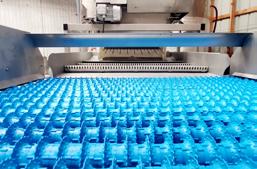


An Army veteran, Shuan Butcher has spent most of his life working in the nonprofit sector on issues such as arts and culture, heritage tourism, civic engagement, and community development. He is a member of the National Press Club. He published “Inspiration to Serve: 101 Quotes about Kindness, Caring, and Giving,” co-authored “Making Change for the Better: The Importance of Youth Giving,” and contributes to a variety of local, regional, and national publications.
Spring 2024 Frederick Business Quarterly 39
For more information
Farms, Frederick District.farm
Mountain Creamery, Middletown
Wines,
i
District
South
southmountaincreamery.com Linganore
Mount Airy linganorewines.com



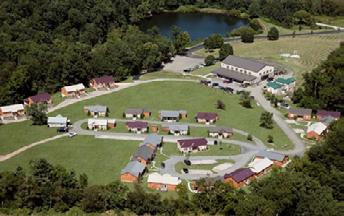

40 Frederick Business Quarterly Spring 2024




Perched atop one of the highest ridgelines in Gettysburg, framed by historic wood and stone architecture and stunning views of historic Gettysburg battlefields and Hunter Lake, The Lodges at Gettysburg is a destination unlike any other in the area.
It’s peaceful here with a timeless tranquility and rustic elegance that settle you into a relaxed state of mind. Beautifully maintained grounds and lodging, surrounded by 63 acres of rolling Gettysburg countryside, with a dash of historic charm – the perfect backdrop for corporate team building, outside-the-box meetings and extended stay conferences.

717-642-2500 www.thelodgesatgettysburg.com
Spring 2024 Frederick Business Quarterly 41
Camp Gettysburg
Business Comfortable 685
Road Gettysburg, PA 17325

STRATEGY & GROWTH
42 Frederick Business Quarterly Spring 2024
istockphotocom/ Mihaela Rosu
You have a stellar idea for a niche business or you want to start a nonprofit for a cause near to your heart, but before you take a step toward making it happen, you’ve killed the thought. Your brain has already found a long list of reasons it just won’t work. It may be true that what you’ve considered isn’t feasible, but it’s more likely that you’re getting in your own way. You may be holding beliefs that hold you back.

What limiting belief are you ready to rewrite?
Mind Over Mission
by Dave Gorham
We all have limiting beliefs, stories we subconsciously tell ourselves about what we can or can’t do, what we do or don’t deserve, and who we are or are not capable of becoming. Left unexamined, limiting beliefs may prevent us from achieving our goals, finding fulfillment, and unlocking our highest potential.
To understand how to disrupt limiting beliefs, it’s helpful first to explore where they originate. Our beliefs are absorbed from the world around us throughout our lives.
Key influences include:
• Role Models in Childhood
Our earliest role models – parents, caregivers, teachers –shape our core belief systems. Their behaviors and their own unconscious limiting beliefs leave an imprint on us as children and become internalized as truth. For example, if a father constantly criticizes his son’s abilities, his son may adopt the belief, “I’m just not good enough.” This belief then limits confidence and potential long into adulthood.
• Cultural Norms and Values
The culture and society we grow up in teaches us assumed rules for how the world works and what’s possible for people like us. These cultural standards seep into our subconscious beliefs.
For instance, a young girl raised in a community that still emphasizes long held beliefs about limited opportunities for women may absorb that limited thinking. Over time that can result in beliefs like, “I can’t be a scientist” or “women shouldn’t be ambitious.” This girl’s ambitions become restricted by these false cultural narratives.
• Education and Knowledge Gathering
Well-intentioned as it may be, formal education often teaches us “facts” and standards that inadvertently limit our beliefs about ourselves and others. A student who struggles with math may get labeled “not a math person” by teachers, even
Spring 2024 Frederick Business Quarterly 43

44 Frederick Business Quarterly Spring 2024
Growth istockphotocom/ francescoch
Strategy &
Imagine how your life would transform with a new empowering belief. Then affirm it through positive self-talk.

though they have the innate aptitude, just not the proper learning approach yet. This belief can haunt a person for life.
• Unconscious Absorption from Life Experiences
We pick up limiting beliefs from subtle life experiences starting in childhood. An offhand judgment from a peer, a small failure, a stray comment all quietly implant self-limiting beliefs that can affect us for a lifetime if not addressed. Imagine a 12-year-old girl eager to make friends. One day she awkwardly misreads social cues and gets excluded from a party. She adopts the belief, “I’m socially weird,” which sticks with her for decades, stunting her confidence.
Next step: Identify and challenge your limiting beliefs
Because they operate in your subconscious, the first step to overcoming your limiting beliefs is to drag them into the light.
Ask yourself:
• What chronic stress, frustration and resistance do I feel in my life?
• What drama and conflict do my beliefs create with others?
• What goals and dreams feel impossible for me to achieve?
• When do I think, “I can’t do that”?
These are entry points to excavate the limiting beliefs that constrain you from your potential. Once you identify your limiting beliefs, there are proven tactics to challenge limiting beliefs. They include:
Journal about them: Write the belief down clearly. Re-read it after 24 hours for a fresh perspective. New insights will emerge.
Get another opinion: Share your belief with trusted friends. Does it seem valid from their perspective? Hearing from others helps us detach from beliefs we’ve overly identified with.
Advise yourself as a friend: If a dear friend had this belief, what would you say to them? Take your own advice!
Examine counter-examples: Has this belief always been true? What past experiences contradict it? Hard evidence trumps inner doubts.
Research opposing views: What do experts say that disrupts your limiting belief? Knowledge expands limiting lenses.
Visualize and affirm alternatives: Imagine how your life would transform with a new empowering belief. Then affirm it through positive self-talk.
Spring 2024 Frederick Business Quarterly 45 Strategy & Growth

Next step: Fake It ‘til You Make It
If you act as if your new empowering belief is already true, it will gradually become your reality. Our actions shape our beliefs as much as our beliefs shape our actions.
Let’s think about this technique in action. Imagine Sarah freezes up when speaking in her college classes due to her belief that “I’m terrified of public speaking.”
First, Sarah journals about where this belief came from. She remembers being a shy child and flubbing a class presentation in middle school, cementing her fear. Sarah asks friends if they also believe public speaking is terrifying. They reassure her that everyone gets nervous, and her fear is unreasonable.
She reminds herself that she can easily order food in restaurants and chat with peers daily, so she can speak confidently in public. Her past failures weren’t inevitable.
After reading about exposure therapy, she vows to start small by complimenting someone each day. Finding she can do this comfortably, Sarah gradually exposes herself to more challenging
speaking situations while affirming, “I can speak confidently when I choose to.” Within a few months, Sarah’s once terrifying belief has transformed into, “With practice, I can speak competently in public.”
The Liberation of Changing Beliefs
Disrupting limiting beliefs takes dedicated focus and intention, but steadily replacing old constraints with empowering beliefs liberates us to create the lives we truly want. It allows the eager, but doubting, student to become the valedictorian, the chronically single person to find a fulfilling relationship, the frustrated worker to build their dream career, and the wannabe entrepreneur to launch the business they always envisioned.
By updating the narratives running through our subconscious, we install new and improved operating systems for greater achievement. Limiting beliefs are just old programs that no longer serve the people we aspire to become. When we identify and rewrite them, we reclaim the power to achieve our boldest dreams and highest potential.
What limiting belief are you ready to rewrite today?
46 Frederick Business Quarterly Spring 2024 istockphotocom/ wildpixel Strategy & Growth
Visit insideoutlooks.com (https://www.insideoutlooks.com/blog/how-toeasily-change-limiting-beliefs-that-hold-you-back/) for an accompanying podcast during which hosts Dave Gorham and Matt Walley do a deep dive into where limiting beliefs come from, how to identify them, and most importantly, how to challenge them so you can transform stagnating narratives into empowering beliefs that set you free.

Dave Gorham spends all of his time being Dave, the authentic, unapologetic, “this is who I am” – Dave, and as a result he inspires others to do the same. He encourages people to listen more intently to what’s in their gut, their heart, and their mind instead of just the first of those to rise to an occasion. Listening to all three affords an opportunity to discover which one begs to be heard and discover what they really want and who they really are. As a Mind-Set Coach for both Inside Outlooks and Frame of Mind Coaching, Dave helps other professionals achieve their ultimate goals. With an extensive background in marketing, advertising, and business management, Dave comes with a unique approach to leadership coaching, and let’s be clear –we are all leaders somewhere within our personal lives.
With a passion to guide people to reach their goals and help show up like a Superhero to beat the crap out of those unavoidable villains that taunt us daily. He helps clients create the success they want. His focus is always on expansion and growth along with assisting clients with “Big-Picture” issues. His efforts have been rewarded with an ever-increasing client base. Dave is also the President & Co-Founder of Realty Solutions LLC, a Real Estate Management Company in New Jersey. His extensive involvement with many facets of real estate coaching have led to the success he enjoys today. Dave brings over thirty (30) years of real estate experience to his work and continues to invest in real estate and in himself.

Matthew Walley is a creative soul, wizard of words, world traveler who is often called a “Renaissance Man.” As a performer, leader, coach, writer, poet, and Christian, Matthew has a zest for life and every adventure that comes with it. His journey led him to live in seven different countries across four continents… so far, and he carries the rich cultures, magnificent landscapes, beautiful people, and incredible friendships forward from each of those remarkable experiences.
Matthew’s career as a performer quickly afforded him a lead role on Broadway in Terrence McNally’s “Master Class,” opera roles throughout the US, Europe and Asia, and multiple performances as soloist at Carnegie Hall and with major symphony orchestras in both the US and overseas.
After retiring from the stage – Matthew chose to relocate from Manhattan to Hilton Head Island for a better quality of life and quickly found himself following in his father’s footsteps by diving into a career in real estate. In 2008 he was hired as the Team Leader / CEO for Keller Williams Realty on Hilton Head, and after three and a half successful years he went on to lead KW offices in Charleston, Nashville, Atlanta, and KwaZulu Natal, South Africa where he spent a year and a half as a consultant, trainer, and coach for multiple KW offices. After engaging mindset coach Dave Gorham (now dear friend and business partner) in a life changing experience, Matthew knew he wanted to impact lives the way Dave had impacted his own. He quickly gained his coaching certification and within a few years also founded Inside Outlooks, LLC as an independent coaching company. As a Mindset Coach Matt combines his love for people with a strong passion for helping highly motivated individuals to exceed their own expectations. As a writer and poet Matthew collaborates regularly with authors and writers on various books and projects, and he also works with photographers, artists, coaches, and thought leaders to enhance their incredible works and success through the written word. As a wordsmith Matt is regularly inspired by the words of others and creates “on the fly” poetry with their words and his thoughts woven together. His talents have been likened to “witnessing a master create a work of art right before your eyes.” Matthew’s love of poetry also has him working feverishly on multiple poetry collections, and several children’s books.
Spring 2024 Frederick Business Quarterly 47
Strategy & Growth

WORK/LIFE BALANCE
48 Frederick Business Quarterly Spring 2024
istockphotocom/AnnaStills
Productive But Protected: What are the health implications of frequent LED screen use?

Technology is so integrated into our lives, especially our work lives, that we don’t spend much time thinking about what it may be doing to our health.
by Erik Anderson
We have arrived at a point in time when the generation known as Millennials, who first engaged with the internet as children, are mid-career professionals who treat internet-enabled technologies as extensions of their own hands.
(Your humble correspondent first logged onto a whirring dialup connection at the age of 11 and is now a 38-year-old dad who can’t keep his toddlers away from the family iPads.)
Technology is so integrated into our lives, especially our work lives, that we don’t spend much time thinking about what it may be doing to our health. If we’re being honest, we probably know using our devices may carry health implications, but we have no intention of changing our usage habits. So, we look away from the risks when we should spend more time looking away from the screens.
Guillermo Warley, a lecturer with the Institute for Learning in Retirement at Frederick Community College, draws on 40 years of experience as an electrical engineer to teach older adults about the social and health impacts of modern technology.
The good news is that, according to the best of his research on the subject, we don’t need to fear the electromagnetic signals constantly emitted by our devices.
He said institutions such as the World Health Organization, the National Cancer Institute, the Federal Communications Commission, and similar organizations in Europe, have concluded radio frequencies – signals we use for mobile phones, WiFi and Bluetooth – do not cause harm to the human body.
“X-rays are dangerous because they’re such high frequencies, their wavelengths are so tiny that they can disrupt things like DNA,” he explained. “That’s what’s called ionizing radiation, and that is dangerous. But the frequencies we use for radio transmission of any kind are orders of magnitude lower than that.”
The only possible source of direct harm from devices’ internal processes is the heat they generate, he said, but he hastened to add, “The human body has a very good capacity to dissipate heat,
Spring 2024 Frederick Business Quarterly 49
istockphotocom/Peopleimages

so you would have to have dramatic exposure for a very long time to even feel the heat.”
Warley has found a wide body of research showing negative impacts on eye health and sleep cycles from prolonged exposure to device screens, especially the common LED screens.
“They usually have a high component of blue light,” Warley said of LEDs. “It could have a good impact. For example, [blue light] has been used for treatment of concussions. But in those cases, it’s done with a controlled environment and a controlled dose, which really doesn’t resemble anything like what happens when people are constantly looking at the phone.”
Steven Allgaier, an optometrist with Walkersville Eyecare, said the pandemic lockdowns led to a new body of medical studies on the health effects of blue light exposure because isolation led Americans to spend more time looking at device screens.
Allgaier said about 20% of the population “seems to have a natural sensitivity to that spectrum of light. The blue end of the spectrum does have a higher energy wavelength, so there is potential to cause some issues.”
“The simplest way of limiting blue light exposure when an LED screen is necessary is to look at it from as great a distance as possible ... when you double the distance from 10 inches to 20 inches, you’re not just cutting the energy level in half, you’re cutting it four-fold.”
- Steven Allgaier, optometrist with Walkersville Eyecare

He said people who fall outside of that 20% do not appear to suffer noticeable symptoms from even prolonged exposure to the blue light emitted by LED screens. But for those within that population, symptoms can include headaches, migraines, and eye fatigue.
Additionally, he said, it’s possible for anyone, even those outside of the sensitive population, to have their sleep cycles disrupted by too much blue light exposure because it signals the body that it’s time to be awake even after the sun goes down. He said avoiding blue light in the hour before bedtime helps reduce these effects.
Warley said that blue light’s effect on the sleep cycle may be desirable in certain circumstances.
“It can keep you more alert, for example, but at the same time, that has some disruption for sleep,” he said. “It’s sort of like what happens when you drink a lot of coffee. It has some benefits if you want to be more awake, but too much of that and it starts to be a problem.”
There is a possibility that sensitive individuals may suffer retinal damage or macular degeneration from prolonged blue light exposure, Allgaier said, but “we don’t have enough information or longitudinal studies to know whether it’s actually going to matter or not.”
50 Frederick Business Quarterly Spring 2024 Work/Life Balance
istockphotocom/PonyWang

He believes a proactive stance is warranted in case long-term exposure eventually proves to have those severe effects. He said the good news is that simple steps can drastically reduce both the risks of serious damage and of the known fatigue and pain symptoms for sensitive groups.
He said the simplest way of limiting blue light exposure when an LED screen is necessary is to look at it from as great a distance as possible.
“The intensity of that [light] energy drops off exponentially as you get away from the screen,” Allgaier said. “For example, when you double the distance from 10 inches to 20 inches, you’re not just cutting the energy level in half, you’re cutting it four-fold.”
Similarly, turning down the devices screen brightness can drastically reduce that energy exposure, he said. Most devices default to their brightest setting but can be easily dimmed. He added that because tech companies are now aware of blue light hazards, most devices have blue light filters that can be activated in settings.
He said there are also glasses available that can filter blue light.
“The thing that’s important to know about blue light [filtering] glasses is they still allow blue light through, but to a lesser extent,” Allgaier said. “The most common blue light glasses will filer anywhere from 15% to 20% of the blue light energy.”
Most lenses that filter a higher percentage of blue light are significantly yellow-tinted, he said, adding that a 15% or 20% exposure reduction is usually sufficient to abate symptoms.

Erik Anderson is a frequent contributing features writer to the Frederick News-Post and other local publications. He primarily covers local history and theater. Email him at erikanderson07@ gmail.com.
Spring 2024 Frederick Business Quarterly 51 Work/Life Balance
istockphotocom/ronstik


SUBSCRIBE to receive our digital magazine at www.frederickbusiness.com to stay up to date and get all the latest information.




































 by Whitney Hahn
by Whitney Hahn

























































